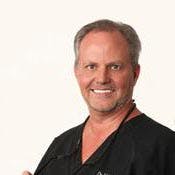Practice vital signs
By Michael Kesner, DDS
How healthy is your practice? Is it growing and thriving, or is it on life support? There are practice vital signs that will help you determine the financial health of your business, just like there are vital signs to determine health of your body.
The closer your practice is to the ideal vital signs, the stronger it will be, the faster it will grow, the more revenue it will generate, and the more it will sell for one day. Knowing how to correct unhealthy vital signs is the key to your financial success.
Here are some vital statistics that will determine how well you are practicing the business of dentistry:
- $25,000 per month, per team member – If you have four people on staff, then you should be producing $100,000 per month. If you have six staff, then you should be producing approximately $150,000 per month.
- $25,000-$30,000 per month, per treatment room – If you have five total treatment rooms (doctor and hygiene), then you should be producing about $150,000 per month.
- 70-plus new patients per month per doctor – Most dentists see 12 to 20 new patients per month. So 70 new patients per month may seem impossible to some. It's not. This is a healthy number of new patients.
- 70-80% case acceptance rate – The average case acceptance rate for dentists is 23%. This means that seven to eight out of 10 new patients do not follow through and do the dental treatment they need. You can change this when you and your team understand the psychology behind why patients say either "yes," or " I'll check my schedule and call you back."
- 25%-plus of daily production in same-day dentistry – Many dentists struggle with doing same-day dentistry because they do not have the capacity in facility, staff, and/or efficiency. Doing the dentistry today is more profitable than scheduled dentistry, and patients love it. You also do not have cancellation or no-show problems if the treatment is done today.
- Case average of $2,500-plus – Case average is the total revenue produced divided by the total number of new patients. Case averages that are too low are an indication of not presenting treatment in a way that helps patients want the treatment they need.
- Less than 75% of one month's production in A/R – Most of your accounts receivable should be in insurance claims. High A/R is an indication of poor financial arrangements, and/or poor collection systems, and/or the practice is acting like a bank.
- 100% collections – You should collect all that you produce.
- 25-35% of total revenue in hygiene – Your hygiene department should be profitable. It should not be a loss leader. This is done with a good recall system, commissioned hygiene, assisted hygiene, and a good soft-tissue program.
- Hygiene schedule NOT full two weeks out – You should have holes in your hygiene schedule two weeks out. If you are booked solid two-plus weeks out, then you have a capacity blockage that is costing you new patients. People will usually go to another dental office rather than wait for more than two weeks to get their teeth cleaned.
- Understand marketing – You need a 4:1 gross return on marketing costs in the first month. You also need at least a 75% phone call to new-patient appointment conversion ratio. Remember that marketing only gets the phone to ring. The caller does not become a new patient unless the person answering the phone converts that call into an appointment.
Take control of your business and your financial future by learning to master the business of dentistry. This is crucial to your financial future.
This will probably be the hardest thing you have ever done, should you decide to transform your practice. If it were easy, then everyone would be doing it.
Also, if you could do this by yourself, then you already would have! Get help from an expert.
You will need someone who has actually done this and built a financially successful dental practice. In other words … someone who has "been there and done that."
Yes, it is expensive to hire someone with this experience and knowledge. But it is far more costly to do nothing and stay the same.
Past DE Articles


